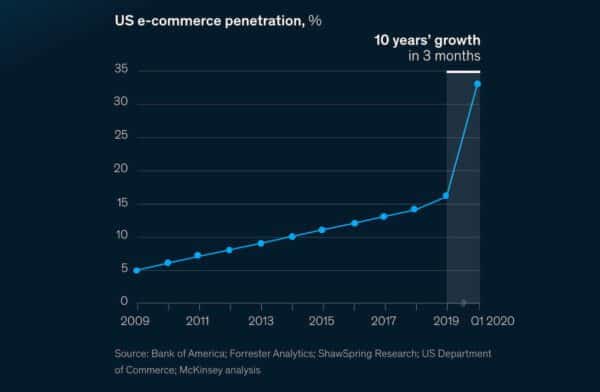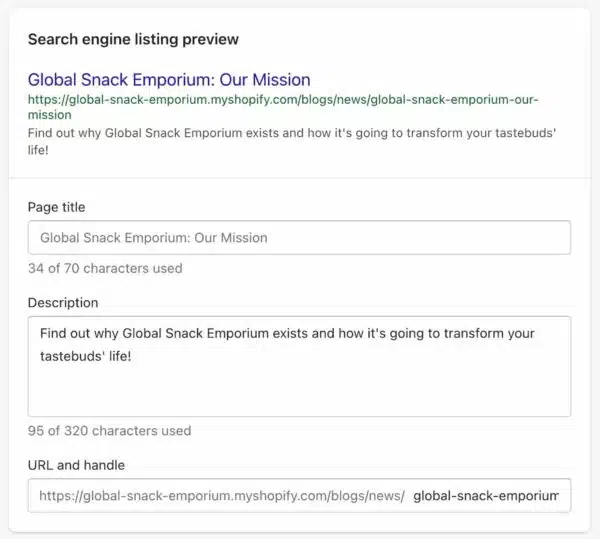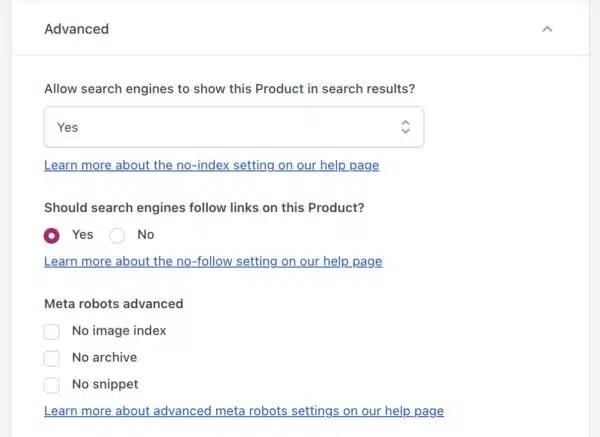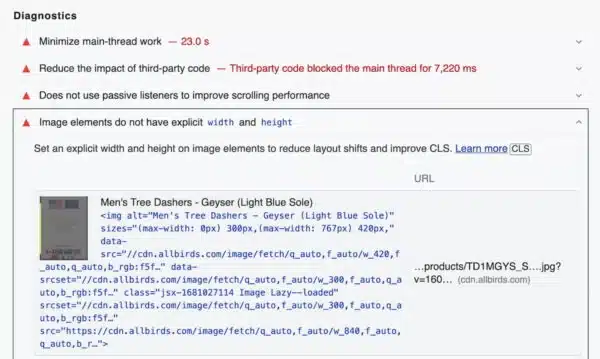Shopify SEO: the ultimate guide
In just a couple of years, Shopify has become the leading online shopping platform. It has become something of an anti-Amazon, helping small and large retailers worldwide run successful online stores with minimal effort. Although Shopify makes everything easy, there’s a lot you can do to improve the SEO of your online shop. In this Shopify SEO ultimate guide, we’ll help you on the right track by giving you tons of tips and tricks. In addition, we’ll also tell you what the best SEO app for Shopify is – and we have a Shopify SEO checklist for you!
Table of contents
- Introduction
- What is Shopify?
- What is Shopify SEO?
- SEO basics for Shopify
- Technical SEO for Shopify
- How to increase sales in Shopify
- Conclusion on Shopify SEO
Introduction
Since the early days of Amazon, ecommerce has been building up a storm. Every year, more and more people start to see the value of online shopping. Every day, new online stores and online shopping solutions popped up. In 2020, we noticed that storm become a tornado, thanks to the COVID-19 pandemic — suddenly, everyone was forced to buy online. And that trend is not dying down any time soon. These changes in buying behavior are permanent for many people.
Just look at this chart from McKinsey, which shows the jump in ecommerce penetration quite starkly:

Ecommerce is quickly getting hold of the US shopping industry
One of the most apparent successes in the meteoric rise in online shopping is Shopify. And with the following SEO tips for Shopify, you can benefit from that rise as well.
What is Shopify?
Shopify is an online tool that helps you build and maintain an online store with ease. It is a managed platform, meaning that the software is hosted on their servers, so you won’t need separate hosting. Shopify will take care of all of this for you. You simply take out a subscription to use it to build your online shop. Currently, Shopify has several plans:
- The Basic Shopify plan starts at $29 per month.
- The Shopify plan is $79.
- While and the Advanced Shopify plan is $299.
- In addition, there’s also the enterprise-grade Shopify Plus plan.
The differences between the plans mainly consist of having more options or different discounts on various costs. For instance, you’ll get better shipping rates and lower payment costs. You can find the biggest difference in the selling internationally section: only the higher plans will let you set up an international domain and let you set up specific pricing for these countries. Also, the basic plan does not come with reporting options.

Get your store online in no time with Shopify and follow the SEO tips in this ultimate guide to get started
What is Shopify SEO?
While Shopify helps you set up everything correctly from the start, there are some things to be mindful of when thinking about SEO. As with all content management systems, you need to optimize your store to ensure it performs well for customers and search engines alike.
With Shopify SEO, you’re building a store that is technically sound and one that is tuned to what potential customers are looking for. You will use Shopify SEO in such a way that you build a much better solution than what your competitors are doing. You use research to find out what customers need, and you use the power of high-quality content to draw people in. The Shopify SEO tips also have to do with what you do to market your store in other places — both online and offline. At Yoast, we practice holistic SEO and we advise you to do the same — it’s the only way to get sustainable results.
While Shopify helps you set up everything correctly from the start, there are some things to be mindful of when thinking about SEO. As with all content management systems, you need to optimize your store to ensure it performs well for customers and search engines alike.
With Shopify SEO, you’re building a store that is technically sound and one that is tuned to what potential customers are looking for. You will use Shopify SEO in such a way that you build a much better solution than what your competitors are doing. You use research to find out what customers need, and you use the power of high-quality content to draw people in. The Shopify SEO tips also have to do with what you do to market your store in other places — both online and offline. At Yoast, we practice holistic SEO and we advise you to do the same — it’s the only way to get sustainable results.
Does Shopify have good SEO?
Shopify makes sure that you set up your store quickly and customers and search engines can reach it. Shopify already has some basic SEO features and you can use SEO apps such as Yoast SEO for Shopify for a lot of the other tasks. Of course, this being a closed platform, the control you have over SEO is limited to what the developers of Shopify allow.
For instance, you have to use the built-in URL structure and a system to manage your products in so-called collections, but these can be sub-optimal and might cause duplicate content issues. In the rest of this guide, we will go through the SEO basics you need to have covered and how Shopify and Yoast SEO for Shopify can help you.
What are the biggest SEO issues with Shopify?
Shopify is one of the best ecommerce platforms out there. It does most things reasonably well, and with a bit of finetuning and care, it’s a solid platform to build your online store on.
Most SEO issues with Shopify arise from its handling of different products and their variants. Shopify products can live in multiple places/URLs in your online store, and that can confuse search engines. Luckily, Shopify adds canonical URLs to signal to search engines that the one in the /products/ section is the canonical one. Unfortunately, there’s not much you can do about this but be aware of the limitations.
Another thing people have an issue with is Shopify’s rigid URL structure. It uses a system based on subfolders, and that makes for unnecessary long URLs. For instance, you can find the contact page on a regular site on example.com/contact/, but on a Shopify store, that’s always example.com/pages/contact. Unfortunately, there’s nothing you can do about this.
Shopify is listening to its community and has begun to roll out several improvements that make it even more attractive as an ecommerce platform. Let’s hope they will keep their focus and help you get the best results with your store. In the meantime, Shopify SEO apps like Yoast SEO for Shopify and the tips and checklists in ultimate guides like the one you are reading now help alleviate the various issues.
What is the best SEO app for Shopify?
Shopify is extendable, and you can choose from a broad selection of apps that help you improve your store. There are apps to help with shipping your products, designing your store, and offering customer services. Too many to choose from! Of course, there are also some SEO apps to take note of.
Some apps help you optimize images, others help with Schema structured data, and there are all-in-one SEO suites. The best one? We’re a bit biased, but we think Yoast SEO for Shopify is the one that stands out from the competition.
SEO for Shopify: Your Shopify SEO expert
WordPress fans have enjoyed using Yoast SEO for more than a decade — it’s the most popular SEO plugin for a reason! Yoast SEO is for SEO experts by SEO experts. But we didn’t make it for experts only. We’ve made SEO accessible for all so that everyone working with WordPress can use Yoast SEO and get a fair chance in the search results. Over 12 million websites trust Yoast SEO and our WordPress app has over 25,000 five-star reviews on wordpress.org. Now, SEO comes to Shopify – ready to help shop owners get more out of their stores.
SEO for Shopify not only helps store owners improve their site in a technical sense, but it also comes with an advanced SEO and readability analysis. The app will help you enhance your product page descriptions by suggesting improvements to make. These suggestions help you make the best product descriptions.
In addition, these analyses also work on your Shopify blog. Content marketing plays a massive role in getting your store noticed on Google. The SEO for Shopify app helps you write high-quality, readable content that strikes a chord with potential customers.
Of course, that’s not all the SEO app does. Be sure to check out the product page for SEO for Shopify or the Shopify SEO app store listing to find out more. In addition to the app, our SEO content gives you all the knowledge, tips, and tricks you need to make the most out of your Shopify SEO.

SEO for Shopify gives you feedback on your product pages that help you to improve them
SEO basics for Shopify
Shopify is a great platform to host your online shop on, but there’s a lot you can do to make it perform even better. SEO can help you get your store noticed on Google and other platforms while making it more attractive for potential customers. In this ultimate guide to Shopify SEO, we’ll give you loads of tips — and a checklist — to make your ecommerce site successful!
Define who you are and what you stand for
To kick things off, we need you to think about who you are. Why does your business exist, and why do you need people to visit your store and buy your products? What makes you stand out from the competition? If everyone sells the same products, what would be your number one reason for people to come to you?
Define a mission for your store. A mission is an effective way of getting into words what you have in your head. It provides a line that you can connect to your values and principles. You can use your mission as input for the SEO and marketing strategy for your online store. We have a post explaining exactly what you need to do to define a good mission and what to do with it.
Start with keyword research for your store
SEO for your Shopify store must start with keyword research. Keyword research is the process you undertake to produce a list of terms you want your products, services, or store to be found for. Doing keyword research will give you insights into your audience, which words they use, with solutions they prefer, and how they behave. Do it well, and you get to fill in your SEO strategy for your Shopify site instantly.
There are various tools out there that can help you get those insights quickly. You could use Google Trends, Answer the Public, or more professional tools like Ahrefs and Semrush. Do thorough research and find out which terms are used most often. Find out what people usually search for, and which phrases have search volume that you might aim for. Keep in mind that trying to aim for the most popular head terms only might not make the most sense — try to aim for more long-tail keywords that still attract traffic.
You should also look at the different search intents around your products or services. No one is going from not needing something to buying it in the next second. The buyer journey goes through a whole number of steps. You need to provide content for those steps.
Look at what the competition is doing
When doing keyword research, you also need to see what your competition is doing. There are a ton of competitors operating in every niche you can imagine. Whenever you are looking at entering a market — or growing your piece of the pie — you need to look at the competition. Who are they? What do they stand for? What’s their offering? Their prices? Service? How do they talk about the product? Who are they targeting and by which terms do they do that?
Looking at your competitors gives you an idea of who to beat. You might find a weakness in their store or strategy that you might make use of. Or, you can find something that gives you the inspiration to work from. Take an extra careful look at their content; are they writing thoroughly and with expertise about the product? Is that something you can improve on?
Write unique and high-quality product descriptions
Together with product photography, product descriptions are the life and blood of your online store. With good product descriptions, customers can get a good feel for a product without having it in hand. The problem is many online shops count on the descriptions manufacturers supply to stores. You can probably guess what that means; the same descriptions litter the web, causing duplicate content issues.
Writing your product descriptions can help you establish trust with the consumer. Having your content in your own words makes you more unique and lets you stand out from the crowd. Do a bit of keyword research for the products to find out which terms your consumers use. Use those terms in your descriptions and craft a compelling piece of content from that. Incorporate the details from the manufacturer, like SKU and product titles, but don’t rely on their descriptions.
Always try to describe your products as a solution to a problem the consumer might have. We have more tips on how to improve your product descriptions in your online store in general, plus we have an article on how to do that, specifically in Shopify.
Helping you improve your product descriptions is one of the standout features of Yoast SEO for Shopify. The app gives you suggestions while writing your descriptions and tips to help you improve both readability and SEO.
Write great titles and meta descriptions
Just as your product descriptions should be excellent, your titles and meta descriptions should be epic as well. The title and meta descriptions are essential aspects you can focus on to improve Shopify SEO. Use your keywords tactically and make sure to write something enticing those consumers will want to click.
Shopify automatically generates titles and meta descriptions for you based on a straightforward template. You can edit your products’ titles and meta descriptions, blog posts, pages, collections, and general site settings. Simply go to a specific page and open the search engine listing preview in Shopify. Here, you can add a title and meta description for the search results pages. These differ from the regular title and descriptions, as these are specifically meant for the search results. So, you might have a certain title visible on your store and choose something else to show in the search results pages.

Quickly edit the information that will show up in the search results pages
You can edit these in Shopify, but Yoast SEO for Shopify makes this process a lot easier. This SEO app comes with the incredible power of variables. Thanks to variables, you can automatically generate part of the title and the meta description based on your settings. Of course, it’s always better to write both yourself but this allows you to automate some parts of it. Which can be helpful when you have lots of products.
How to create SEO-friendly URLs in Shopify
SEO-friendly URLs are URLs that are easy to read, relatively short, and consistent. Unfortunately, Shopify is somewhat inflexible, and there isn’t much wiggle room to improve your URL structure. If you sell ugly Christmas sweaters, your Shopify collection URL looks like this:
https://example.com/collections/ugly-christmas-sweaters
The only thing you can change in this setup is the last part. Many people feel that there should be a way to have Shopify give more control over the rest.
Fix your site structure with internal linking and proper navigation
One of the most impactful tips to improve your Shopify SEO is to fine-tune your site structure and navigation. The more logical your site is, the better and easier customers and search engines like Google can navigate it and find what they need.
Your site structure should follow a logical path, and your collection system in Shopify should make sense. Keep it simple. You can see collections as categories, so use the collections to keep customers from having trouble understanding your site. It’s also nice if they don’t have to wade through a million products to find what they need. Make sure to give the collection overview pages the love they need as well. At the least, give these a proper description.
Internal linking helps you give the most critical pages proper weight. By linking to your product pages from various parts of your online shop, you signal to search engines that these are important. With proper anchor texts, you can identify the destination and tell search engines in words what to expect from that link. All of this helps search engines understand your site.
For your navigation, you should keep it as straightforward as possible. Use recognizable terms and destinations as your menu should describe where a click would lead. Contact us says a lot more than Touch base!, right?
Your most important pages should appear in your navigation. While the age-old three-click rule for navigating to all the pages on your site was debunked quite a while ago, there’s still a lot to be said for keeping everything within reach. Your most important pages should be accessible without digging for them.
Make products findable with an XML sitemap
XML sitemaps are like a map detailing all the routes to the different parts of your website. Search engines use sitemaps to discover new and updated content. This also goes for your online shop. Shopify will automatically generate an XML sitemap based on your site structure. In your Shopify XML sitemap, you’ll find product pages, collections, blog posts, and pages.
You can find your sitemap at the following URL, with example.com being your domain, of course:
https://example.com/sitemap.xml
There’s a set limit for XML sitemaps of 50.000 URLs. As many sites have a lot more than that, they will generate sub-sitemaps with fewer URLs. The Shopify sitemap, for instance, can contain up to 5.000 URLs, after which the platform breaks these up into smaller parts. This has the added benefit of speeding up the loading times of these sitemaps as well.
To a certain extent, Yoast SEO for Shopify lets you control what appears in your XML sitemap. For instance, you can determine that a specific page or post won’t appear in the search results by adding a noindex. In addition, you can decide whether archive pages should or should not appear in the XML sitemaps. For the most part, though, your out-of-the-box settings will probably be good enough. But if you want to tailor your crawling, you can.

Yoast SEO for Shopify helps you determine what does and doesn’t appear in Google
Don’t add a bunch of Shopify apps you won’t use
While it’s exciting to try out every Shopify app under the sun, keep yourself in check. Many apps are bulky and heavy on JavaScript. Adding many apps will add a lot of extra code to your store as everything needs to be loaded all the time. One of the most crucial performance improvements you can make is to keep the number of apps low. Think about what you need for your store, pick the apps that do that job the best and remove the rest.
Properly working with images on your store to improve Shopify SEO
Images are an essential asset for every online store. Customers can’t get a good feel for the product without great photos. But you need to offer all those images in the best way. Optimizing your images is one of the best and quickest tips to improve your Shopify SEO.
The importance of good product images
Good product images make it clear what a product is all about. It helps consumers view products from all angles without having to have the product in their hands. Product images need to be good, as it is one of the main drivers of conversion. Good photos also can catch the eye of the shopper. Great photos get to stand out in visual search engines like Google Images, Instagram, or Pinterest.
Optimize the file sizes
One of the most significant tips to improve the SEO of your Shopify store is optimizing your images. It’s also something everyone can do — whether you are a seasoned ecommerce SEO expert or just starting. Optimizing your images, compressing them, and giving them proper names helps!
Average product pages might have around five or more images. If all of these product photos are enormous, hi-res files, then the loading times of your product page will go up. You need to keep your file sizes in check. There’s no need to upload 3MB photographs. Be sure to size them and run them through an optimizer properly. In the Shopify App Store, you can find several tools that can help you do this.
When uploading, Shopify already compresses images but not to a massive extent. In addition, Shopify automatically converts your images to the next-gen WebP image format and serves those smaller files to browsers that support these.
Do your image optimization before you upload the images to Shopify. If you already have them uploaded to Shopify, you can use an app to fix them. Compressing thousands of images is tedious, and there are better ways of spending your time than going through them one by one. Luckily, some tools can help you speed this up. In the Shopify App Store, you’ll find multiple apps that take care of the compression and optimization of your photos. You could try TinyIMG or Crush.pics to get started.
Lazy loading images
Another effective way to improve the loading times of your images is by lazy loading them. With lazy loading, the images will only load once they appear on the screen. Of course, you should never lazy load all your images as you want the images at the top of your browser window to be always visible. For the rest, lazy loading is a good choice.
While Shopify does some lazy loading by default, you might have to check your theme if it has incorporated it. In the past, you needed to use JavaScript libraries to get this done. Today, you don’t have to use those for lazy loading — simply use native lazy loading. This works in almost all major browsers, with Safari being the last hold-out. For Apple devices, you must turn this on manually in Safari as of now (for the curious: Settings > Safari > Advanced > Experimental Features > Lazy image loading). It shouldn’t be too long before Apple rolls it out for everyone.
<img src=”screenshot.jpg” loading=”lazy”>
Preventing CLS
While you’re at it, check if your theme enforces width and height attributes on img tags. This helps avoid cumulative layout shift (CLS), one of Google’s metrics to determine your Core Web Vitals scores. CLS happens when elements move around during loading because image boundaries haven’t been defined. This causes jerkiness, and that’s a sign for Google that your user experience is lacking. You can try this by running your online store through Google’s page quality checks at web.dev/measure. On that site, you can also learn more about why and how to optimize your site for CLS.
<img alt=“screenshot” src=“screenshot.jpg” width=“100” height=“200”> <img alt=“{{ image.alt }}” src=“{{ image.src }}” width=“{{ image.width }}” height=“{{ image.height }}” >

Many sites still have visual elements that can use a proper width and height specification to prevent CLS
